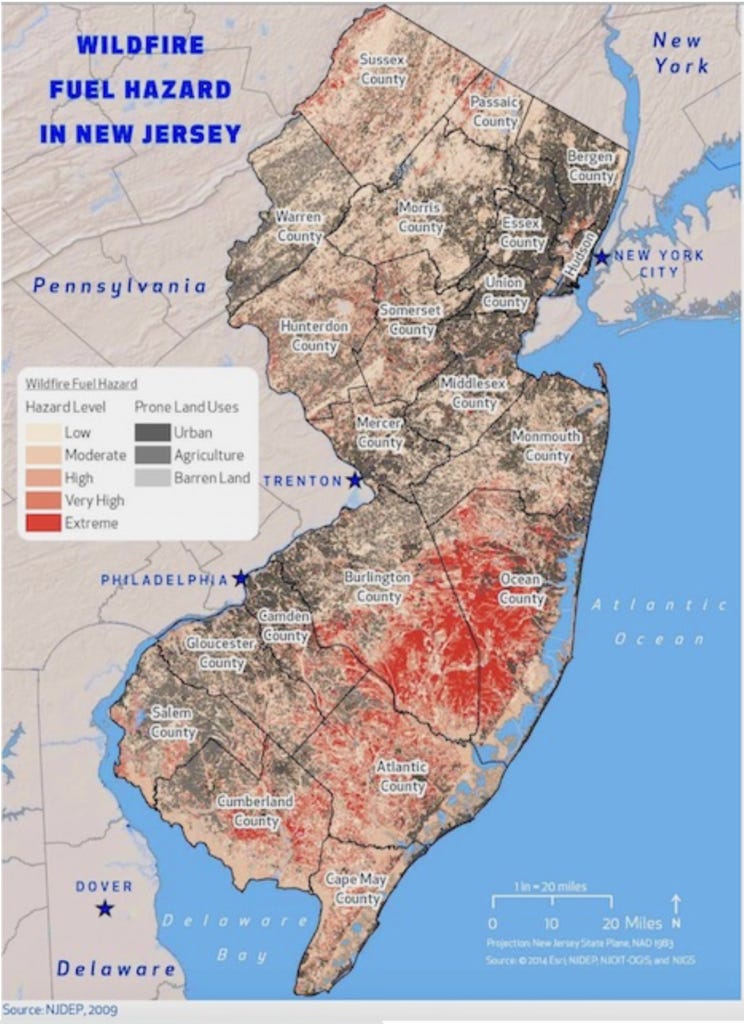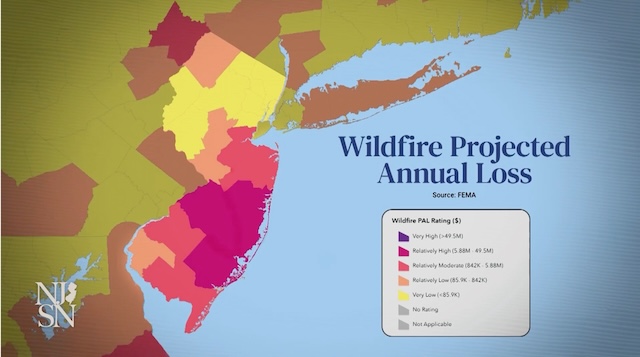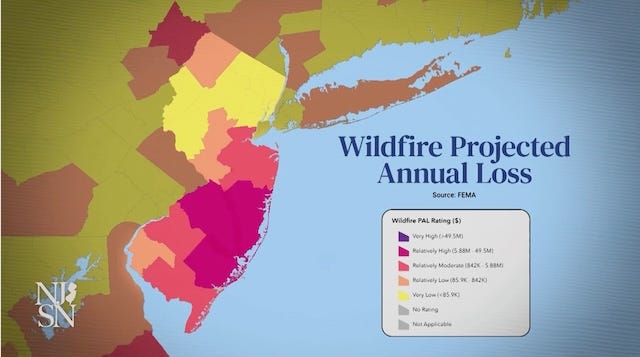 (British Columbia, Canada)
(British Columbia, Canada)
(Wisdom, Montana)
I just got an urgent email from Bernie Sanders titled “Trumpism”, which I immediately opened to find:
Trumpism will not be defeated by politicians inside the DC beltway. It will only be defeated by millions of Americans, in every state in this country, coming together in a strong, grassroots movement which says NO to oligarchy, NO to authoritarianism, NO to kleptocracy, NO to massive cuts in programs that working people desperately need, NO to huge tax brakes for the richest people in our country. And that’s what these events are about.
Aside from the fact that Bernie needs an editor, I guess – as Kurtis Blow warned us way back in 1980 – these are the breaks!
Brakes on a plane, brakes on a train
Breaks to make you go insane
Breaks in love, breaks in war
But we got the breaks to get you on the floor
And these are the breaks
Break it up, break it up, break it up
Break down, yo
DEP Did Not Provide EPA Appeal Procedures
We Fire The First Shot Across The Bow To Get Trump EPA’s Attention
This post goes deep in the regulatory weeds, so if that’s not your thing, just hit the delete button.
But before doing so, consider that many environmental battles are won based on procedural errors!
I am NOT an expert in air pollution permit issues and rarely get involved in them. The science and technical issues are extremely complex and the regulations are absolutely byzantine.
I sense that this is by design, to make it almost impossible for people to understand and participate in Clean Air Act programs to hold polluters and government accountable, while allowing lobbyists and lawyers for the polluters to capture and control government regulators.
But I do have 2 very big wins on air regulatory issues when I have weighed in:
So, when I roll up my sleeves, I can win.
The Murphy DEP’s permit decision-making in the Newark fossil gas power plant was so egregiously flawed that I sense it’s worth some time to read the regulations and engage with the EPA.
And right out of the box, after reading the applicable EPA regulations (40 CFR 70.8), I see that the Murphy DEP may have made mistakes.
DEP managed to confuse and mislead the public about how to participate in the EPA’s review and they failed to even mention the 60 day clock on the public’s right to petition EPA (search EPA’s database for the phrase: “Title V Operating Permits Public Petitions” to see 844 records!)
In order to send a message to EPA Region 2 permit review staff who supervise the NJ DEP permit program under the Clean Air Act that someone is looking, I sent them the following note.
The DEP’s error is very minor and easily remedied, but EPA’s response will signal whether they are willing to hold DEP’s feet to the fire on this permit.
Ideally, they will conclude that the DEP permit raises national legal precedent and policy issues and refer the case to EPA HQ in Washington DC for decision:
Dear EPA Region 2 Title V Permit Reviewers:
I write concerning the subject Title V permit recently issued by the NJ DEP.
It appears that DEP has made a procedural error regarding public notice of applicable requirements pursuant to 40 CFR 70.8 (see my email below to Kevin Greener, NJ DEP contact). It appears that DEP provided notice to the commenters on the permit, however, that notice was flawed for 3 reasons:
1) it omitted the public appeal procedures pursuant to 40 CFR 70.8(d);
2) it appears to have been provided only to commenters on the draft permit; and
3) the inclusion of the EPA 45 day review period and omission of the 60 day appeal procedure created confusion and thereby provided inadequate public notice.
Please be advised that I plan on filing substantive comments to EPA pursuant to EPA’s review under 40 CFR 70.8(c). This email does NOT constitute those future comments.
Given the controversy over this permit and high public profile, I wanted to bring this matter to your attention and be assured that EPA is taking a hard look at the NJ DEP’s permit decisions in this matter.
Please request that NJ DEP provide accurate and adequate public notice in accordance with applicable requirements.
I look forward to your timely and favorable reply.
Respectfully,
Bill Wolfe
———- Original Message ———-
From: Bill WOLFE <>
To: Kevin.Greener@dep.nj.gov, shawn.latourette@dep.nj.gov, Bill WOLFE <>
Date: 02/16/2025 9:16 AM EST
Subject: Fwd: Response to Comments on Air Permit Application BOP210002 for PI # 07349
Kevin – your email notice below left out important information.
Pursuant to applicable federal regulations: (40 CFR 70.8(d))
“if the Administrator does not object in writing under paragraph (c) of this section, any person may petition the Administrator within 60 days after the expiration of the Administrator’s 45-day review period to make such objection. “
https://www.ecfr.gov/current/title-40/chapter-I/subchapter-C/part-70/section-70.8
I assume that this email notice was provided only to commenters on the draft permit. However, the commenters and the public should be provided adequate notice and made aware of the opportunity to object. Note the regulatory term “any person“, not just commenters.
Please correct this inaccurate notice to commenters and the public (inaccurate by omission).
Bill Wolfe
c: Commissioner LaTourette
———- Original Message ———-
From: Pagodin, Timothy [DEP]
Date: 02/14/2025 12:12 PM EST
Subject: Response to Comments on Air Permit Application BOP210002 for PI # 07349
Re: Passaic Valley Sewerage Commission
Facility Program Interest No.: 07349, Permit Activity No.: BOP210002
PROPOSED OPERATING PERMIT SIGNIFICANT MODIFICATION
Dear Commenter:
This is to inform you that the public comment period for the draft permit for the above referenced facility has closed. You have submitted comments regarding this draft permit. The Department’s response document addressing these comments, the proposed operating permit and the statement of basis are available on the Department’s website at https://dep.nj.gov/boss/public-notices/.
The Department is now sending the proposed operating permit for this facility to EPA for their review and comment. State and Federal rules provide EPA a 45-day period to comment on proposed permits.
These rules also allow you to petition the EPA to object to the final permit as long as you provided timely comments to the Department during the public comment period, consistent with N.J.A.C. 7:27-22.12(g). The EPA’s 45-day proposed permit review period and the public petition deadline are posted on EPA’s website:https://www.epa.gov/caa-permitting/title-v-operating-permits-public-petitions-deadlines-region-2. You may contact EPA with any questions regarding a public petition for this proposed permit.
If you have any questions regarding this Proposed Operating Permit, please contact Kevin Greener at (609) 609-940-5668 or Kevin.Greener@dep.nj.gov.
Sincerely,
Timothy Pagodin
On a late Friday afternoon before a long holiday weekend, the Murphy DEP issued an air pollution permit to the controversial Passaic Valley Sewerage Commission’s fossil gas power plant in Newark (read the permit document and DEP response to public comments).
The permit was strongly opposed by the Newark community and statewide environmental justice and climate activists.
I outlined the issues when DEP issued the draft permit for public comment last October, see:
Opponents have 45 days to appeal the permit to US EPA Region 2.
[Procedural Note: to clarify the confusing guidance DEP provided: EPA has 45 days to review the DEP permit. The public can submit comments to EPA during this time. If EPA does not kill the DEP permit, then the public can petition EPA, see:
(d) Public petitions to the Administrator. The program shall provide that, if the Administrator does not object in writing under paragraph (c) of this section, any person may petition the Administrator within 60 days after the expiration of the Administrator’s 45-day review period to make such objection.
I submitted comments on the draft permit that identified fatal legal flaws.
3. COMMENT: The draft permit is fatally flawed. An Administrative Order (AO) of the Commissioner may not establish substantive binding regulatory requirements. An AO is only binding on Department employees in their administrative functions. Binding substantive regulatory requirements can only be imposed pursuant to rulemaking, as authorized by the legislature. (Written: Bill Wolfe)
My comments were intended to force DEP to withdraw the permit and thereby force PVSC to go back to square one and submit a new permit application for review under the new DEP “environmental justice” regulations.
COMMENT: The PVSC permit application was submitted and deemed administratively complete before the adoption of the EJ Rule. The Department may not retroactively impose regulatory requirements. In this case, PVSC’s permit was submitted before the EJ Rules were on the books. The Department should withdraw the draft permit and reconsider a new permit application with EJ Rules in place. (Written: Bill Wolfe)
But DEP plowed ahead and issued the permit anyway.
So, I will raise those same fatal legal flaws to US EPA Region 2.
COMMENT: The NJ APCA does not authorize the Department to base permit conditions on EJ reviews or EJ issues, including location in a designated EJ community or the presence of disparate impacts. The regulations adopted by the Department to implement New Jersey’s APCA do not authorize the Department to consider and base permit conditions on EJ issues. The EJ conditions were state-only applicable requirements; thus, the basis for the conditions appears to be State law. However, the state-only conditions impact a Federal permit subject to EPA review and approval pursuant to the CAA. It appears Federal and State law are implicated. (Written: Bill Wolfe)
In addition to fatal legal flaws, the DEP permit raises nationally controversial issues, including “environmental justice” and mandatory permit conditions that require the installation of renewable energy (solar and battery storage) as a condition of receiving a federal Clean Air Act permit.
COMMENT: A Federal court has recently struck down EPA’s authority to consider disparate impacts and cumulative impacts in EPA permits, finding that Congress did not provide that authority (see: U.S. District Court Judge Cain, Judgment pursuant to the ruling in State of Louisiana v. EPA, No. 2:23-cv-00692, W.D. La. Jan. 23, 2024, Aug. 22, 2024). Additionally, there are other Title VI cases out of New Jersey that make it virtually impossible to litigate the issue of whether the issuance of a draft permit violates the Civil Rights Act. For example, the Third Circuit Court’s holding, in South Camden Citizens in Action v. New Jersey Department of Environmental Protection, 274 F.3d 771 (3d Cir. 2001)
https://www.gibbonslaw.com/resources/publications/third-circuit-closes-seconddoor-on-plaintiffs-in-south-camden-environmental-justice-case-05-02-2002 (Written: Bill Wolfe)
I obviously do NOT support the policy of these comments, I am only making them to force EPA to kill the permit and send PVSC back to square one and force them to comply with NJ’s EJ law and DEP EJ regulations.
Those issues also are caught up in the various Trump EPA Executive Orders that rescind various environmental justice policies and mandate rollbacks of many EPA regulations, see:
Basically, my objective is to inject sufficient fear in the hearts of EPA Region 2 bureaucrats that they refer the decision to EPA Washington DC HQ.
Surely, the Trump EPA hacks will kill it if they learn that it involves “environmental justice” and renewable energy mandates – both national precedents that conflict with the Trump agenda.
I’ll do a follow-up post with the specifics when I draft my EPA review petition.
Policy wonks can review the DEP response to comments document, where I raised these issues.
Unfunded State Mandates Curiously Praised By Local Officials

[Update: Wow. I knew the NJ media would be duped, but NJ Spotlight’s typical lapdog stenography of DEP press releases goes beyond the pale. ~~~ end update]
According to a joint press release today (2/13/25) by Gov. Murphy’s Office and NJ DEP:
BURLINGTON COUNTY – Governor Murphy and Department of Environmental Protection Commissioner Shawn LaTourette today announced a series of actions that emphasize the importance of wildfire safety, mitigation, awareness, response, and training – known as NJ Wildfire SMART – and reduce wildfire spread as New Jersey heads into the spring wildfire season amid continued dry conditions statewide.
Surprisingly, the announcement was praised by several local officials, despite the fact that DEP is abdicating State management responsibilities and deferring to local government, while not providing sufficient State funding. That approach is usually denounced by local officials as an “unfunded State mandate”.
I issued the following Statement to the NJ media in response – but of course, they will be spun by DEP and ignore it:
Press Statement
The DEP is using wildfire risks to expand logging (fuel reduction & forest thinning), burning (prescribed burns), and roads (firebreaks).
All these techniques either increase wildfire risks and/or harm forest ecosystems, and do little or nothing to reduce wildfire risks.
The DEP SMART program ignores LAND USE – limiting development in high wildfire hazard areas and retrofitting existing development there.
The DEP ignores scores of Pinelands wildfires started by the US Air Force training missions.
So it really is not based on best available SCIENCE and DESTRUCTIVE and WON’T WORK.
I also need to repost this January 16, 2025 post in light of today’s “Wildfire Roundtable” held by Governor Murphy and DEP with local officials
Posted on January 16, 2025 by Bill Wolfe
DEP Wildfire Map Exposes DEP Regulatory Failure
Insurance Industry Wildfire Map Shows How Much Market Forces Have Displaced DEP Regulation
NJ Is Making Exactly The Same Tragic Mistakes As California
(Source: NJ DEP)
The California wildfire catastrophe has forced NJ wildfire issues back in the media.
Those major issues include: 1) the climate emergency, 2) forest management, 3) poorly planned and unregulated development in high wildfire hazard areas, 4) the lack of emergency planning and preparation; and 5) lack of funding, staffing and legal authority.
I recently wrote a brief note to remind people that DEP was mismanaging NJ’s forests with respect to both climate and wildfire; had explicitly refused to regulate new and existing development in DEP mapped “High Hazard” areas; and had abdicated implementation of prevention and management programs to reduce risks identified in NJ Hazard Mitigation Plan (which include wildfire) to local government, see:
DEP explicitly stated that they lacked legislative authority to regulate based on wildfire risks. Instead, to address wildfire risks, the DEP relies on other indirect regulatory protections of natural resources, not the explicit risks of wildfire. The DEP wrote:
While the Department has considerable authority to regulate certain activities in particular environmentally sensitive areas, the Department does not possess the sort of master land use planning or regulatory authority alluded to by Petitioner. In the particular areas over which the Department has regulatory authority, the development of many land areas that may be susceptible to wildfire is already minimized under the Department’s regulation of impacts to natural resources such as wetlands, threatened and endangered species habitat, coastal areas, riparian areas, and certain forested areas.
I made key NJ Legislators – including the Senate Environment Committee Chair Bob Smith and members of his Committee – aware of this huge gap in DEP’s authority. No legislator even replied.
In contrast, California regulators issued a Report warning of wildfire risks:
Back in 2019, a California state climate task force issued a stark warning: endless development in the state’s high-risk wildfire zones was magnifying wildfires and putting more people in their path.
Based on that Report, Legislators introduced a bill, back in 2021, that would regulate development in high wildfire hazard lands, see:
In 2021, Stern’s bill would have barred development in “very high risk” zones, with exceptions for cases in which local fire agencies adopted a comprehensive plan for wildfire risk management. Without such limitations, development in these areas was likely to continue to boom; one 2014 study estimated that by 2050, a million additional houses would be built in very-high-risk wildlife zones in California. Already, there are two million homes in high and very-high-risk wildfire zones in the state.
The real estate and development industries opposed and killed that bill.
Tragically, as a result, thousands of new homes were built in high wildfire hazard lands, including some burnt by current LA wildfires.
I again brought the lack of DEP authority and the California bill to the attention of NJ Legislators and DEP Commissioner LaTourette and urged them not to make the same mistakes as California legislators did. And Again, none replied.
Equally bad, not one aspect of this science and irresponsible planning, regulation, reckless development, and DEP mismanagement has been reported by the NJ press corps or exposed by NJ environmental groups.
It’s as if DEP were invisible and had no role whatsoever in wildfire and land use issues.
Instead of the DEP mapping of risk and regulatory issues regarding development and wildfire risks, we get the insurance industry’ perspective in today’s NJ Spotlight:


Even the so called “environmental leaders” are focussed on property values, money, and insurance and also totally ignore the science and DEP planning and regulatory issues.
And that is why DEP and NJ legislators ignore and dodge the tough issues, virtually guaranteeing a repeat of the LA disaster here.